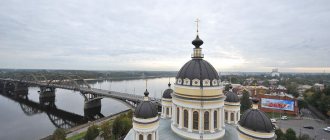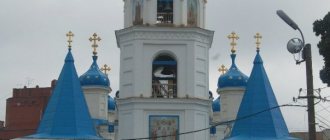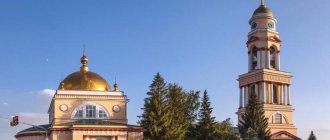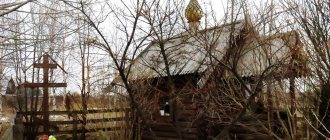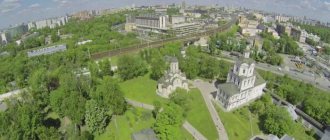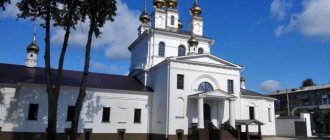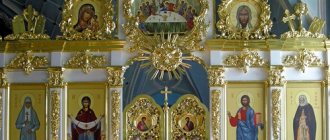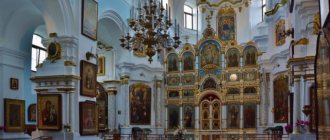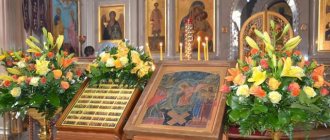Located in the historical center of the city, the Cathedral of the Epiphany in Irkutsk has been attracting tourists and pilgrims from all over Russia for many years. Due to its unusual architecture, it has become one of the favorite objects of local artists and photographers. Since its foundation, at the end of the 17th century, the temple survived a fire and several reconstructions, but it was and remains one of the most beautiful architectural structures in the country.
History of the cathedral
The Epiphany Cathedral in Irkutsk is the second oldest stone structure in the city. Over more than 3 centuries of its history, it has gone from a wooden temple to a majestic cathedral.
Wooden church
The original structure was erected entirely from wood in 1693 by residents of a nearby fort. To build the church, they selected a picturesque corner on the lower Angara embankment, on the eastern side of the Irkutsk Kremlin. In honor of one of the Kremlin towers, it was christened the Peter and Paul Church.
Construction and foundation of a new cathedral
The original structure only stood for a few years. On August 3, 1716, all buildings were completely destroyed by fire. After 2 years, it was decided to build the temple again, but this time from brick. The difficulty was that at that time the second Russian capital was being built, and by decree of Peter I it was prohibited to erect any buildings made of stone. At the end of 1718, the severity of the decree was relaxed, and thanks to the generous donations of the townspeople, construction work began.
In 1724, six years after the start of work, the first structure was opened - the Peter and Paul Chapel. The belfry was completed at the beginning of 1729. In the summer of the same year, the chapel of St. John the Warrior was opened and consecrated. Construction of the brick fence began in 1755.
Since 1960, over the course of 10 years, 3 more chapels were gradually opened:
- Kazan Mother of God (south side);
- John the Baptist (north side);
- All Saints (north side).
As a result of the April earthquake of 1804, the 5th dome was seriously damaged and the cross fell. The dome had to be removed.
In 1797, under the supervision of the young craftsman Alexei Unzhakov, the first and largest bell in the city at that time, weighing 12 tons, was cast. Until 1815 it hung on poles. The first ditches for the new bell tower were dug in September 1812, and construction was completed and the bell was hung under the dome on March 30, 1915.
The first restoration took place in 1862, after a series of earthquakes on December 30 and 31, 1861.
The damage was serious:
- cracks appeared on almost all the vaults;
- the arches located above the doors and windows burst;
- Several frames fell from the lantern windows in the cold temple;
- In the Peter and Paul iconostasis, 2 supporting columns have shifted.
Towards the end of the 19th century, administrative premises were built near the temple, called the Bishop's Compound. They were given over to the bishop's quarters and other administrative needs. After some time, the library and spiritual consistory, the diocesan administration of the Russian Orthodox Church, were moved there. Later, the building of a religious school and the crypts of some Irkutsk bishops were erected.
Historical fate
In the 20s of the 18th century, the Irkutsk diocese became completely independent from Tobolsk, and the Epiphany Cathedral was elevated to the position of the cathedral of the Irkutsk Diocese. But upon completion of the construction of the Kazan Church in 1894, it was deprived of this status. The highest church officials moved to the Kazan Cathedral.
The ceremonial consecration of the Cathedral of the Epiphany, rebuilt after the fire, took place on September 25, 1746.
In 1771, Bishop Sophrony of Irkutsk died. The Epiphany Cathedral became the place of his burial.
During Soviet times, the temple was closed, but was not demolished. After the revolution of 1917, the confectionery shop of a bakery factory was located in it. Due to the needs of the enterprise, internal alterations of the premises were carried out repeatedly and greatly damaged the architecture.
In 1960, a decision was made to demolish the temple, but thanks to the Moscow architect Galina Oranskaya, in 1968 permission was received for a large-scale restoration that lasted 18 years. The temple officially became an architectural monument of republican significance.
After the restoration was completed in 1985, the cathedral was transferred to the Irkutsk Regional Art Museum. After another 9 years, the church was returned to the Irkutsk diocese. And on Easter in 1995, Bishop Vadim consecrated the church, and it again opened its doors to parishioners.
Major reconstruction
When permission for restoration was received in 1968, the whole world got down to business. Workers from various professions have put a lot of effort into recreating the original architecture. The reconstruction was carried out by the best masters of their craft.
The most significant contributions were made by:
- Galina Grigorievna Oranskaya, a Moscow architect, employee of the All-Union Production Plant of the USSR Ministry of Culture, fully prepared the reconstruction project. All work was carried out under her leadership.
- Shtanko A.N. - former teacher of the ceramics department of the College of Arts. He was able to restore a unique and almost forgotten technology for creating tiles, and was also fully involved in their production.
- Kikas O.P. - a professional mason who made thousands of special bricks with his own hands, from which new walls were laid.
In 18 years, it was possible to do the almost impossible so that the appearance of the temple acquired its former majestic appearance and could delight parishioners, as it did 300 years ago.
Current situation
Old problems and deficiencies in the present time first appeared in 2015. During the service, a stone tile moved and the clergyman fell with one foot under the floor. Fortunately, there were no casualties. The temple's supports have not been repaired since its foundation. The wooden floors in the basement were completely unusable. For safety reasons, the doors had to be closed to parishioners.
The most problematic areas were hastily repaired and the cathedral resumed operation, but the building still required major repairs to the basement floors.
Further construction
In this form, the Epiphany Cathedral stood until 1804, when a strong earthquake occurred. As a result of this natural disaster, the church lost its cross and fifth dome.
Ten years after this event, new large ditches were dug for the second bell tower. The bell itself, which weighed about twelve tons, was cast back in 1797 and was named Big. In 1815 it was installed on a new church building, built in the classical style and completely covered with iron.
Architecture and decoration of the building
The painting of the altar was completed in 2002, and the façade of the building was completed in 2003. Master icon painters brought more than 300 square meters of interior decoration into proper shape.
During the 18-year restoration, much was recreated, but the temple was not completely restored to its former appearance.
Appearance
Over its three-hundred-year history, the temple was completed and rebuilt many times. The commissions that made the decision to recreate the appearance did not agree with all of Galina Grigorievna’s arguments, so there are several significant differences in the modern appearance of the temple.
Here are the most notable of them:
- The five-domed dome of the main volume was not restored - now there is only one dome, and only supports from four more remain.
- During the years of restoration, a rather strange decision was made: to dismantle the chapel of All Saints, which was located on the north side of the main structure.
- The commission refused to restore the basements, which in former times served not only for church storerooms, but also for air circulation under the floor and drying the walls.
The modern appearance of the House of the Lord is a mixture of different styles and eras, topped with elements of the art of traditional Siberian peoples. Many bright compositions made in ancient Russian traditions decorate the façade of the building. The multi-tiered structure is completed by a tented bell tower. When looking at the church from the embankment, you can mistake it for an ancient Russian tower.
The space in the temple courtyard is replete with flowering plants. Fountains and benches located in the courtyard attract tourists in the summer. Ice sculptures are erected annually in winter.
Interior design
Thanks to the fact that during the Soviet period, icons from some demolished churches were brought to the Epiphany Cathedral, many ancient masterpieces were preserved. Now they amaze visitors with their splendor.
The many years of work on creating the frescoes were not in vain - more than 300 square meters were hand-painted by masters. Everyone who enters the sanctuary for the first time is sincerely amazed by the beauty and luxury of the interior decoration.
Description
Nowadays, the church is decorated with real works of art, where many saints and miracle workers are depicted in full height. In addition, the temple is beautifully decorated with a variety of unique examples of ceramic tiles, and its walls are originally painted with all kinds of popular prints. The decoration of the facades includes elegant window frames, which are also decorated with magnificent, complexly profiled cornices.
The architecture of the temple structure can be traced to various variations of the Old Russian style and Baroque, which are mainly found in the northern part of Russia. The basis of the composition is a combination of two verticals - a tiered church and a tented bell tower, which plays a leading role in the overall silhouette of the structure. The amazing beauty of the cathedral impresses all guests of the city, so it was chosen as the place where the annual opening of the festival dedicated to Russian culture and spirituality takes place.
How are the services held?
Prayer services:
- Tue, Wed, Fri, Sat, Sun at 8:00 in the chapel of the Iveron Icon of the Mother of God;
- Wed, Sun at 18:00, chapel of the Kazan Icon of the Mother of God (lower).
A prayer service is a joint prayer of believers for the health of the living, strengthening of faith, and purity of thoughts. You can order a note “On health”.
Confessions:
- Wed, Thu, Sat at 8:00 in the chapel of the Apostle Andrew the First-Called;
- Sat, Mon at 19:30 in the upper Church of the Epiphany;
- Sun at 9:00 in the chapel of the Kazan Icon of the Mother of God (lower).
At confession, you can admit your sins, repent, and receive absolution.
Liturgies:
- Wed, Thu, Sat at 8:30 in the chapel of the Apostle Andrew the First-Called in the northern gallery;
- Sun at 9:30.
For the Sacrament of Communion you must come on an empty stomach.
Vespers, Matins:
- Tue at 18:00 in the chapel of St. Alexis of Moscow;
- Thu at 18:00 in the chapel of the Apostle Andrew the First-Called in the northern gallery.
Evening and morning prayers are called the performance of joint prayer.
All services are carried out by:
- Archpriest Anthony;
- Archpriest Andrey;
- Priest Nikolai.
Interesting Facts
It turns out that this temple is considered the oldest stone building not only in its hometown, but also in Eastern Siberia and the Far East. This church has been repeatedly damaged due to various natural disasters, including storms, earthquakes and fires. Only once did this building manage to escape the flames, which in 1879 severely damaged the Spassky Church, but stopped at the gates of this building.
This cathedral, having passed the years of its desolation, has truly been revived and currently attracts the minds and souls of people with its majestic and holy beauty. This Russian church has a very solemn and peaceful appearance, thanks to which all parishioners, after visiting it, find a certain calmness and pleasant lightness. This building can be considered a worthy architectural monument and a real decoration of the city of Irkutsk.
Notes[ | ]
- ↑ 123
Cathedral of the Epiphany (Epiphany Cathedral) - Sights of Russia: Irkutsk. Epiphany Cathedral (unspecified)
(inaccessible link). Access date: May 2, 2010. Archived May 28, 2010. - ↑ 1 2 T. A. Kryuchkova.
From the history of construction and restoration of the Irkutsk Epiphany Cathedral - Ensemble of Tikhvin Square
- “Vesti-Irkutsk”: Reconstruction of the Savior Church (inaccessible link)
- “Vesti-Irkutsk”: They finished painting the altar in the Cathedral of the Epiphany (inaccessible link)
